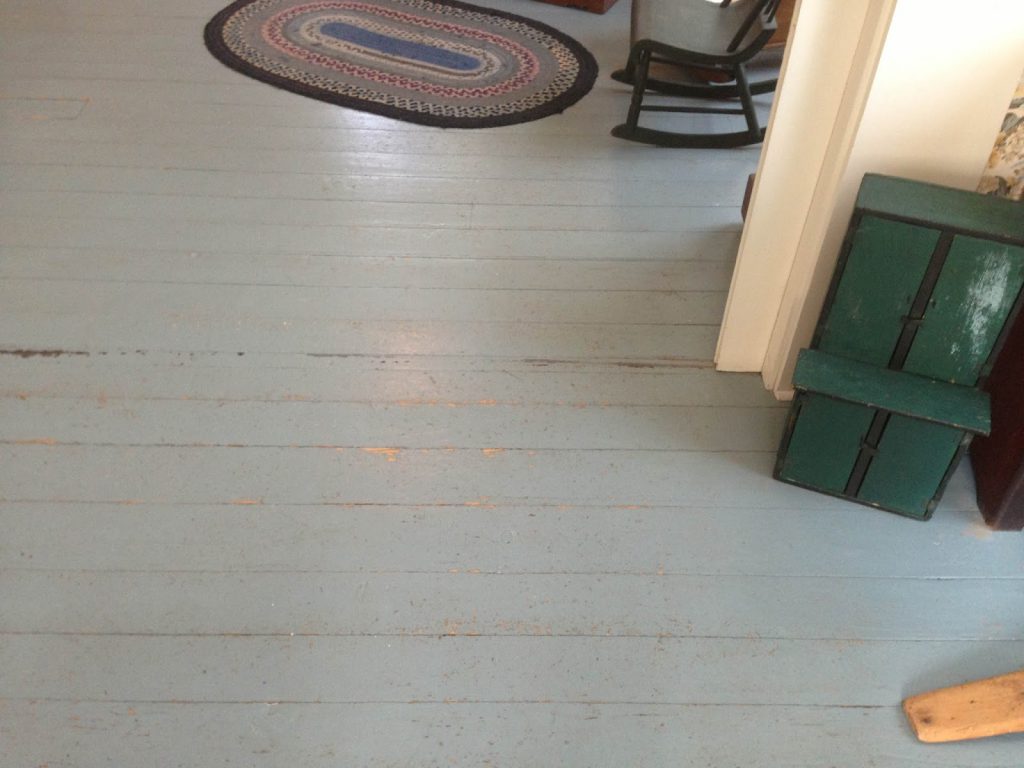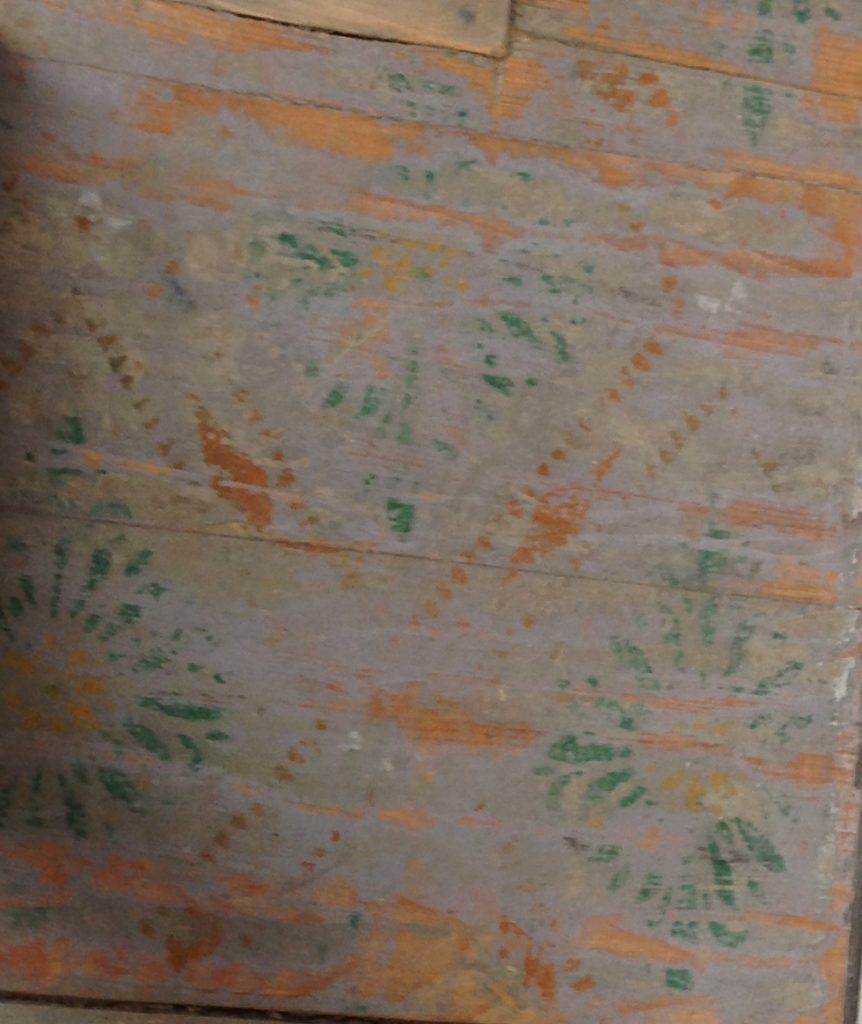Painted Floors in the Victorian Home
Painted floors were common in American homes throughout the 19th century. Durable paints would seal soft pine flooring making them less liable to stain and easier to clean. An 1850 edition of Miss Leslie’s Lady’s House Book recommends cleaning heavily soiled, common pine floors using:
“an old tin pan with some gray sand in it; and after soaping the brush, rub on it some sand also.”

Abrasive sand or pumice could remove stains but would also erode the soft, unpainted floor boards. Since painted and sealed floors would not absorb grease or stains, they could be easily cleaned by wiping or gently brushing with warm soapy water.
Commercial, ready-made floor paints were made durable and glossy by the addition of resins that were otherwise used to make varnishes. These resins, including copal and colophony, were soluble in boiled linseed oil and turpentine and were added to oil paint to provided the hard, glossy coat. Painters and homeowners also used regular, home-mixed oil paint and then applied a protective topcoat of varnish. Alvin Wood Chase’s 1890 receipt book (or recipe book as we say today)Dr. Chase’s third, last and complete receipt book and household physician suggests:
“Paint the whole floor with a mixture of much boiled oil and little ochre for the first coat: then after it is well dried, give two more coats of much ochre and little oil; and finally finish with a coat of first-rate copal varnish. It is extremely durable for floors, windows, or outside, such as verandas, porticoes and the like.”

The Folsom House, an 1855 Greek Revival home in Taylor’s Falls, MN, an early Minnesota lumbering town, features floors painted in a common, blue-gray and a yellow ochre like that mentioned in Chase’s recipe above.

Stenciling was a popular way to decorate painted floors to make them resemble expensive carpets or marble. Stenciled patterns often featured repeating floral or geometric patterns and sometimes included contrasting borders around walls which mimicked carpet borders. Stencils were made from tin sheets which had designs cut out with punches or shears. The stencils were laid on the floor and the paint brushed on leaving the painted pattern on the floor. The process was repeated until the floor was covered with the pattern.
The Folsom House has a few remnants of a repeating, bottle green floral design at the top of the stairway. Examples of floor stenciling are rather uncommon today as they were often obliterated by foot traffic, removed when painted floors went out of fashion or destroyed when linoleum or carpet was installed.
The Folsom House is located in Taylor’s Falls, MN (about 40 minutes northeast of the Twin Cities Metro) but is currently closed to the pandemic. Check their website to see updates about visiting the house next summer.
0 Comments